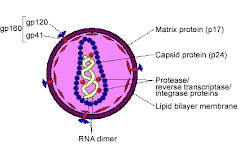
"In the United States, approximately 2 million people get help each year for alcoholism. Alcoholism treatment may include:
* Detoxification: This involves abstaining from alcohol in order to get alcohol completely out of a person's system, and it takes anywhere from four to seven days. People who undergo detoxification often take medications to prevent delirium tremens and other symptoms of withdrawal.
* Pharmaceuticals: People can take drugs such as disulfiram or naltrexone to prevent a relapse once they've stopped drinking. Naltrexone reduces the desire to drink by blocking the centers in the brain that feel pleasure when alcohol is consumed. Disulfiram causes a severe physical reaction to alcohol that includes nausea, vomiting and headaches. In 2004, the U.S. Food & Drug Administration also approved the drug acamprosate, which suppresses cravings by targeting the brain chemicals affected by alcohol.
* Counseling: Individual or group counseling sessions can help a recovering alcoholic identify situations in which they may be tempted to use alcohol and find ways of circumventing the urge to drink in those situations. One of the most recognizable alcoholic recovery programs is Alcoholics Anonymous (AA). In this 12-step program, recovering alcoholics meet regularly to support one another through the recovery process.
The effectiveness of these programs varies depending upon the severity of the problem, the social and psychological factors involved and the individual's commitment to the process. A 2001 study found that 80 percent of people who had gone through a 12-step program such as AA remained abstinent six months afterward, compared to about 40 percent of people who didn't go through a program. Studies have also found that combining medication with therapy works better than either treatment alone. Medication addresses the chemical imbalances that cause alcohol addiction, while therapy helps people cope with abstinence.
Unfortunately, there is no "cure" for alcoholism. Recovering alcoholics must continually work to prevent a relapse. However, a 2001-2002 survey by the National Institutes of Health found that approximately 35 percent of alcoholic adults were able to fully recover from their addiction."
Tuesday, September 18, 2007
Treating "Alcoholism"
Posted by
Boop
at
12:49 AM
0
comments
![]()
Labels: alcoholism, counseling, detoxification, pharmaceuticals, treatments
Monday, September 17, 2007
Effect of "Alcohol" On The Body

"Drinking excessive amounts of alcohol can seriously harm your health, damaging the liver, kidneys, heart, brain and central nervous system.
We already discussed long-term damage to the brain. Over time, alcohol can inflict serious damage on other body parts as well.
Areas of the body affected by alcoholism
* Liver: The liver is particularly vulnerable to the effects of alcohol because it is the organ in which alcohol and other toxins are metabolized (broken down into less harmful substances to be removed from the body). Drinking over a long period of time can lead to alcoholic hepatitis, or inflammation of the liver. Symptoms of this condition include nausea, vomiting, fever, loss of appetite, abdominal pain and jaundice (a yellowing of the skin). Up to 70 percent of people with alcoholic hepatitis develop cirrhosis. With this condition, healthy liver tissue is replaced by scar tissue, which eventually renders the liver unable to function.
* Heart: Because alcohol lowers blood pressure, the heart overcompensates, and the heart muscle can eventually become damaged as a result. Prolonged drinking increases the risks for heart disease, high blood pressure and certain kinds of stroke.
* Stomach: Alcohol irritates the lining of the stomach and intestines, causing vomiting, nausea and eventually ulcers.
* Pancreas: The pancreas releases the hormones insulin and glucagon, which regulate the way food is broken down and used for energy by the body. Long-term drinking can lead to inflammation of the pancreas (pancreatitis).
* Cancer: Research indicates that long-term drinking increases the risk of cancers of the mouth, throat, larynx and esophagus.
The effects of alcohol are even more marked in adults over 65, because their bodies don't metabolize alcohol as well as those of younger adults. Women also have more difficulty metabolizing alcohol than men, because they are typically smaller and lighter in weight. Also, alcohol can be deadly when combined with certain medications, such as pain killers, tranquilizers and antihistamines.
Fetal alcohol syndrome
Alcohol is especially dangerous to unborn babies. Exposure to alcohol in the womb can lead to fetal alcohol syndrome, the number one preventable cause of mental impairment.
Inside the developing fetus, the embryonic cells that will eventually form the brain are multiplying and forming connections. Alcohol exposure in the womb can damage these cells, impairing the development of several structures in the brain, including the basal ganglia (responsible for spatial memory and other cognitive functions), the cerebellum (involved in balance and coordination) and the corpus callosum (aids communication between the right and left halves of the brain). When babies are exposed to alcohol in the womb at any stage of pregnancy, they have more difficulty later in life with learning, memory and attention. Many are also born with a smaller-than-normal head and facial abnormalities."
Posted by
Boop
at
7:53 AM
0
comments
![]()
Labels: alcoholism, effects, heart, liver, pancreas, stomach
Saturday, September 15, 2007
Who Is An "Alcoholic"?

"Most people can enjoy the occasional glass of wine with dinner or beer out with friends. But for other people, one drink becomes two drinks, which becomes four drinks -- they are unable to stop drinking.
Not everyone who drinks alcohol heavily is considered an alcoholic. People who drink regularly enough to affect their family or work responsibilities and who drink in a way that puts them in dangerous situations (for example, behind the wheel of a car while intoxicated) are said to abuse alcohol. Although they use alcohol in an unhealthy way, people who suffer from alcohol abuse do not necessarily develop a physical dependence upon alcohol.
Alcoholics, on the other hand, have a chronic disease. They are physically dependent upon alcohol. They feel a need to drink, almost in the same way that most people feel the need to eat. And once alcoholics start drinking, they are unable to stop. They develop a tolerance to alcohol, requiring more and more drinks to feel the same effects. When an alcoholic tries to cut down or stop drinking, he or she experiences the symptoms of withdrawal: sweating, nausea, shakiness, anxiety and delirium tremens (seeing images, severe shaking, confusion).
More than 17 million Americans abuse alcohol or are alcoholic, according to results from the 2001-2002 National Epidemiologic Survey on Alcohol and Related Conditions (NESARC). Alcoholism affects men more than women: About 10 percent of men, compared to 3 to 5 percent of women, become alcoholics over the course of their lifetime. Men who drink 14 or more drinks a week and women who drink more than seven drinks per week are at risk for alcoholism. Alcoholism is more prevalent among younger people (ages 18-44) than among older people."
Posted by
Boop
at
5:10 PM
0
comments
![]()
Labels: alcoholics, alcoholism, dependency, symptoms

















